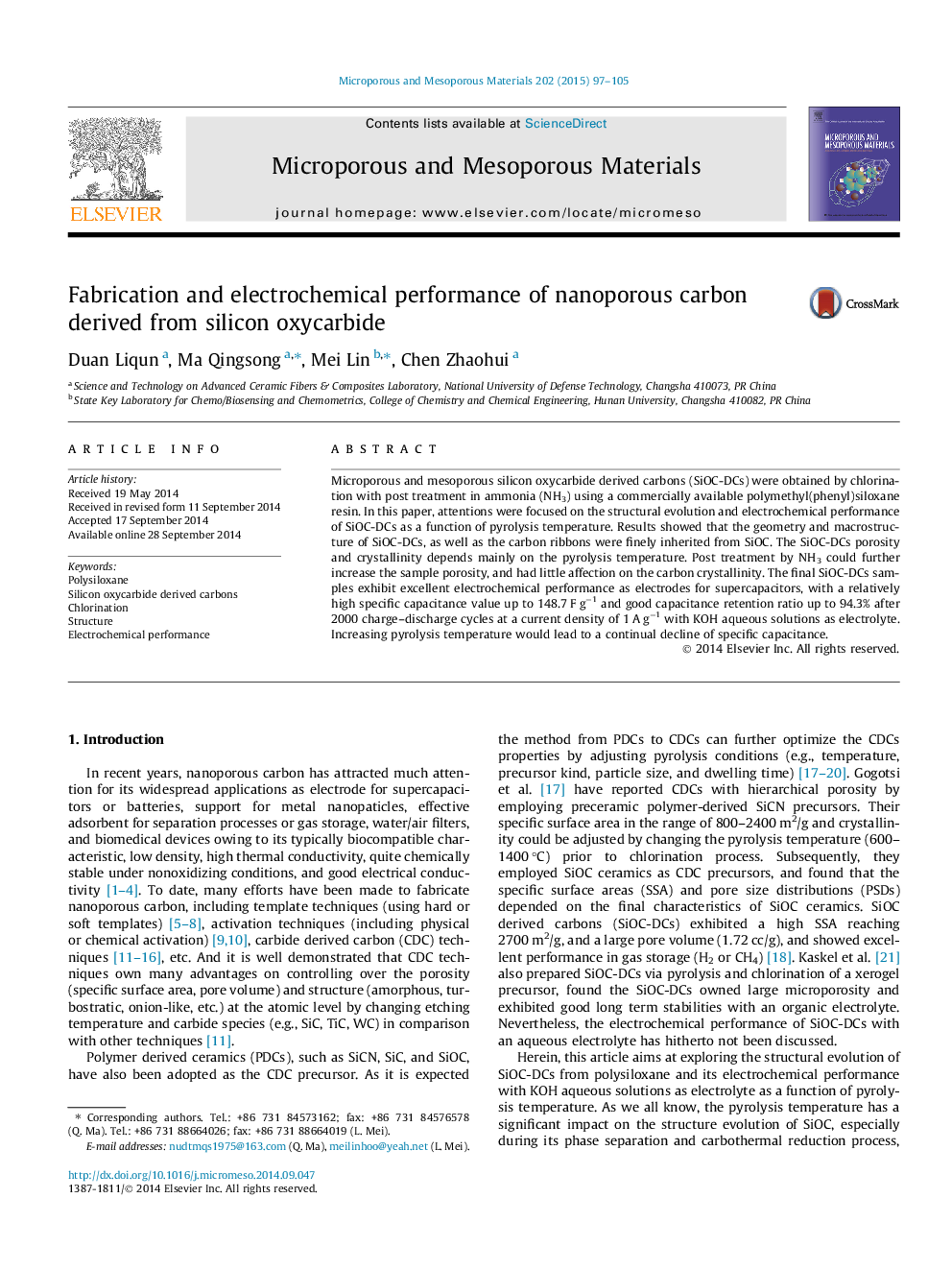| Article ID | Journal | Published Year | Pages | File Type |
|---|---|---|---|---|
| 72899 | Microporous and Mesoporous Materials | 2015 | 9 Pages |
•Nanoporous carbon was obtained by chlorination of SiOC and NH3 post treatment.•The structures of SiOC and SiOC-DCs depend on pyrolysis temperature.•SiOC-DCs exhibit good electrochemical performance.
Microporous and mesoporous silicon oxycarbide derived carbons (SiOC-DCs) were obtained by chlorination with post treatment in ammonia (NH3) using a commercially available polymethyl(phenyl)siloxane resin. In this paper, attentions were focused on the structural evolution and electrochemical performance of SiOC-DCs as a function of pyrolysis temperature. Results showed that the geometry and macrostructure of SiOC-DCs, as well as the carbon ribbons were finely inherited from SiOC. The SiOC-DCs porosity and crystallinity depends mainly on the pyrolysis temperature. Post treatment by NH3 could further increase the sample porosity, and had little affection on the carbon crystallinity. The final SiOC-DCs samples exhibit excellent electrochemical performance as electrodes for supercapacitors, with a relatively high specific capacitance value up to 148.7 F g−1 and good capacitance retention ratio up to 94.3% after 2000 charge–discharge cycles at a current density of 1 A g−1 with KOH aqueous solutions as electrolyte. Increasing pyrolysis temperature would lead to a continual decline of specific capacitance.
Graphical abstractFigure optionsDownload full-size imageDownload as PowerPoint slide
